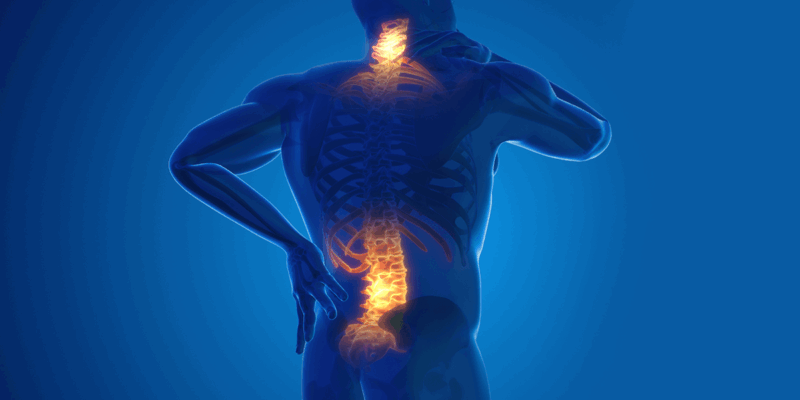

While a slight forward curve in the spine is typical, excess curvature that progresses or causes pain may require medical intervention. Fortunately, numerous treatments are available for lordosis, depending on the cause and severity of the spinal curve. Learn about the diagnosis, symptoms and causes of lordosis, as well as possible treatment options you can pursue.
Lordosis is the medical term for the natural inward curve of the spine. It helps maintain your posture and absorb shock during movements like jumping and walking.
Slight lordosis is normal. The lumbar spine — the five vertebrae in the lower back — generally has a curve of 40 to 60 degrees, while a curve of 20 to 40 degrees is typical in the cervical spine — the first seven vertebrae in the neck. However, excess lordosis and curvature can cause misaligned posture, pain and discomfort. This condition is often referred to as “swayback.”
Two different types of lordosis exist, with cases ranging from mild to severe:
Many people with lordosis don’t experience physical symptoms or pain. So, you may be unaware that you even have the condition until you receive a diagnosis. However, you or others might notice changes in your posture or appearance, such as:
More severe cases of lordosis can cause:
Many cases of lordosis are idiopathic, meaning the cause is unknown. However, contributing factors might include:
While anyone can experience lordosis, the following groups are most likely to develop the condition:
Both of these conditions cause abnormal spine curvature and posture changes, but they differ in the direction of the curvature. While lordosis is the inward curvature of the lumbar or cervical spine, kyphosis causes the spine to curve outward in the upper back. Commonly known as “hunchback,” kyphosis causes a hump on the upper back that curves at over 50 degrees. Both conditions differ from scoliosis, which causes the spine to curve to the left or right.
In some cases, kyphosis and lordosis involve similar treatment methods. For instance, physical therapy can help with both. However, these exercises can look different for each condition since they target different muscle groups and types of curvature. Additionally, severe cases of both kyphosis and lordosis can warrant bracing or surgery, depending on the cause and severity of the curvature.
Doctors can typically identify lordosis with a physical examination. They’ll have you bend forward and to the side, looking at the following areas:
Additionally, they’ll examine your medical history and inquire about other symptoms. They may ask questions such as:
After narrowing down the possible causes, your doctor will likely order an imaging test, such as an X-ray or a CT scan, to examine the angle of the curve and confirm the diagnosis. They can determine if you have lordosis by comparing this angle against factors like your body mass, age and height.
If you have symptoms of a medical condition or an injury that can increase the risk of lordosis, your doctor may perform additional testing to diagnose the underlying cause. You may also be screened for kyphosis, scoliosis and other conditions that affect the spine and back.
For mild cases of lordosis that don’t cause pain or worsening curvature, a doctor usually doesn’t need to intervene. However, for lordosis that does require treatment, the cause and severity of the curvature can help determine the best approach. Standard treatment options include:
If your lordosis causes pain or discomfort, you can also try taking nonsteroidal anti-inflammatory drugs (NSAIDs), such as ibuprofen and naproxen.
If you suspect you or your child is dealing with swayback or lordosis, visit one of our locations at New York Spine Institute. As one of the tri-state area’s largest multi-specialty and orthopedic centers, we treat many different adult and pediatric spinal conditions.
Whether you require a back brace or physical therapy for mild lordosis — or surgical intervention for a more severe case — our experts are ready to work with you to find the most suitable treatment approach. Schedule a consultation with us today, and let us help you get to the bottom of your condition.